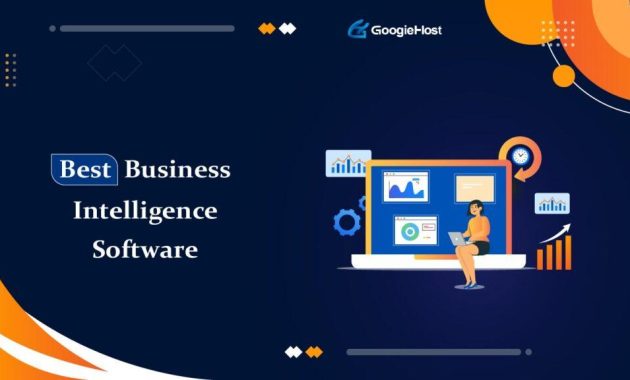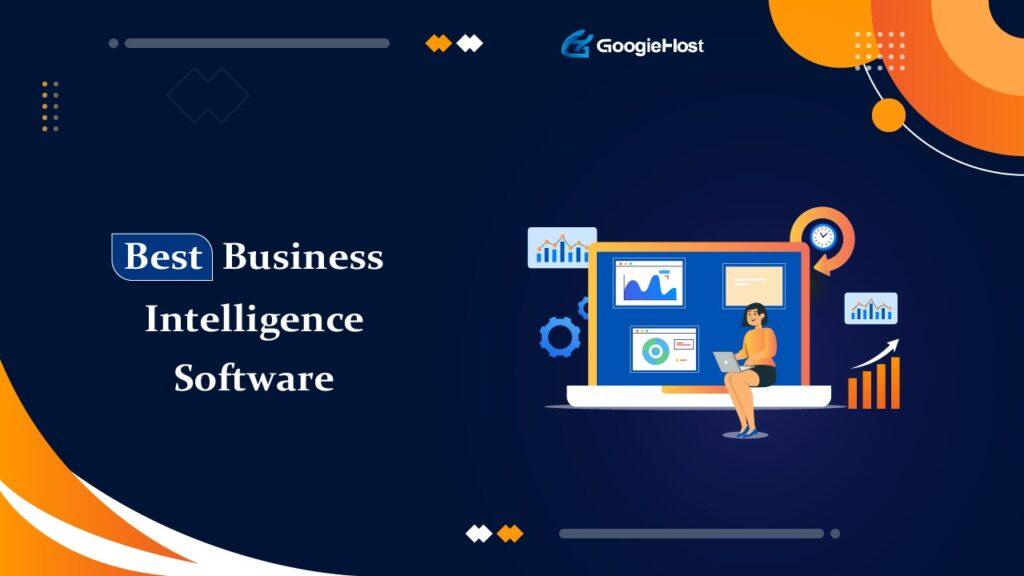
How to Learn Business Intelligence Software Without Coding: A Practical Guide
The world runs on data. Businesses thrive on insights. Business Intelligence (BI) software empowers organizations to transform raw data into actionable intelligence. But what if you don’t have a background in programming? The good news is you can still master BI software without writing a single line of code. This guide provides a roadmap for acquiring these valuable skills. It focuses on how to learn business intelligence software without coding.
Understanding the Landscape of Business Intelligence Software
Before diving in, it’s crucial to understand the landscape. BI software comes in many flavors. Some are designed for specific industries. Others offer a broader range of capabilities. The core function remains the same: to collect, analyze, and visualize data. Popular platforms include Tableau, Power BI, Qlik Sense, and Looker. Each has its own strengths and weaknesses. Consider your needs before making a selection. Many offer free trials or versions. This allows you to experiment and find the best fit. Choosing the right software is the first step in your journey to learn business intelligence software without coding.
The Core Concepts: Data Analysis Fundamentals
While coding is often associated with data analysis, the core concepts are language-agnostic. Understanding these fundamentals is essential. They form the basis of effective BI. This is true whether you are using code or not. Here are some key areas to focus on:
- Data Warehousing: Learn about how data is stored. Understand concepts like data lakes and data warehouses. This knowledge helps you understand data organization.
- Data Modeling: Grasp the principles of data modeling. This involves organizing data for analysis. Learn about entities, attributes, and relationships.
- Data Visualization: Master the art of presenting data visually. Learn about charts, graphs, and dashboards. Effective visualization communicates insights clearly.
- Key Performance Indicators (KPIs): Identify and track KPIs. These are critical metrics for measuring performance. Understand how to define and monitor relevant KPIs.
- Statistical Analysis Basics: Familiarize yourself with basic statistical concepts. Understand measures of central tendency (mean, median, mode). Also, understand measures of dispersion (standard deviation, variance).
Focusing on these core concepts will significantly enhance your ability to learn business intelligence software without coding. These concepts are the foundation of data literacy. This knowledge is valuable regardless of the specific software you use.
Step-by-Step Guide: Learning Without Code
Learning BI software without coding is achievable. It requires a strategic approach. Here’s a step-by-step guide to help you succeed:
- Choose Your Software: Select a BI software platform. Consider your budget, needs, and ease of use. Start with a free trial or a free version. Popular choices like Power BI and Tableau offer user-friendly interfaces.
- Explore the Interface: Familiarize yourself with the software’s interface. Understand where the different functions are located. Explore the menus, toolbars, and panels.
- Take Online Courses: Enroll in online courses and tutorials. Platforms like Coursera, Udemy, and LinkedIn Learning offer courses. Many courses are specifically designed for beginners.
- Use the Software’s Documentation: Consult the software’s official documentation. This includes user manuals, help files, and FAQs. Documentation provides detailed information about features.
- Practice with Sample Data: Use sample datasets provided by the software. Alternatively, find public datasets. Practice importing, cleaning, and analyzing the data. Experiment with different visualizations.
- Build Your Own Projects: Start building your own projects. Begin with simple dashboards. Gradually increase the complexity as your skills improve.
- Join Online Communities: Engage with online communities and forums. Ask questions, share your work, and learn from others. Communities are invaluable for support and inspiration.
- Focus on Data Storytelling: Learn how to tell stories with your data. The best BI professionals communicate insights effectively. Focus on clarity and impact.
- Stay Updated: The BI landscape evolves rapidly. Stay updated with the latest trends and features. Continue learning and refining your skills.
Following these steps will empower you to learn business intelligence software without coding successfully. The key is consistent practice and a willingness to learn.
Essential Skills for Non-Coders
While coding is not required, certain skills are beneficial. These skills enhance your ability to work with BI software. Here are some crucial skills to cultivate:
- Data Literacy: Develop a strong understanding of data. Learn how to interpret, analyze, and present data effectively.
- Critical Thinking: Hone your critical thinking skills. Learn to question data and identify potential biases.
- Problem-Solving: Cultivate your problem-solving abilities. Data analysis often involves solving complex problems.
- Communication Skills: Develop strong communication skills. You need to communicate your findings clearly and concisely.
- Business Acumen: Gain a basic understanding of business operations. This will help you understand the context of your data analysis.
These skills are valuable for any data analyst. They are particularly important for those who learn business intelligence software without coding.
Leveraging Resources and Tools
Numerous resources are available to help you succeed. These include free and paid options. Here are some key resources and tools:
- Online Courses: Platforms like Coursera, Udemy, and LinkedIn Learning offer courses. These courses cover a range of topics. They cover BI software fundamentals to advanced techniques.
- Software Documentation: Official documentation provides detailed information. It is the most reliable source for understanding the software.
- Tutorials and Guides: Many websites and blogs offer tutorials and guides. These resources provide step-by-step instructions. They also provide practical examples.
- Sample Datasets: Use sample datasets to practice your skills. Many sources offer free datasets. These datasets cover various industries and topics.
- BI Software Communities: Join online communities. Connect with other users. Ask questions and share your work.
- Free BI Software Versions: Many platforms offer free versions or trials. These versions allow you to experiment and learn.
By utilizing these resources, you can significantly accelerate your journey. You can effectively learn business intelligence software without coding.
Real-World Examples and Applications
BI software is used across various industries. It helps businesses make data-driven decisions. Here are some real-world examples:
- Retail: Retailers use BI to analyze sales data. They identify trends, optimize inventory, and personalize customer experiences.
- Healthcare: Healthcare providers use BI to improve patient care. They also optimize resource allocation and reduce costs.
- Finance: Financial institutions use BI to detect fraud, manage risk, and analyze market trends.
- Marketing: Marketers use BI to track campaign performance. They also identify customer segments and optimize marketing spend.
- Manufacturing: Manufacturers use BI to optimize production processes. They also improve supply chain efficiency and reduce waste.
These examples demonstrate the versatility of BI software. They highlight its ability to drive business value. Learning to use BI software without coding opens doors to many opportunities.
Overcoming Challenges and Common Mistakes
As with any new skill, challenges will arise. It is essential to be prepared for them. Here are some common challenges and mistakes to avoid:
- Overwhelm: The amount of information can be overwhelming. Start with the basics and gradually increase your knowledge.
- Ignoring the Fundamentals: Don’t neglect the core concepts. Data literacy is essential for effective analysis.
- Focusing on the Tool, Not the Data: Concentrate on understanding the data. The software is just a tool for analysis.
- Lack of Practice: Consistent practice is crucial for improvement. Dedicate time to working with data.
- Ignoring the Learning Curve: Be patient. Learning any new skill takes time and effort.
- Not Seeking Help: Don’t hesitate to ask for help. Online communities and forums are valuable resources.
By being aware of these challenges, you can avoid common pitfalls. You can stay on track to learn business intelligence software without coding.
The Future of Business Intelligence and Your Role
The future of BI is bright. The demand for data analysts is growing. Businesses are increasingly reliant on data-driven insights. Even without coding skills, you can play a vital role. You can contribute to data-driven decision-making. Here’s how:
- Focus on Data Interpretation: Develop your ability to interpret data. This is a critical skill.
- Specialize in a Specific Area: Consider specializing in a particular industry or business function. This increases your value.
- Develop Strong Communication Skills: Practice clear and concise communication. This is essential for presenting your findings.
- Stay Curious: The field of BI is constantly evolving. Stay curious and continue learning.
- Embrace Automation: Learn how to use automation features within BI software. This will improve your efficiency.
By embracing these strategies, you can thrive in the future of BI. You can build a successful career. You can learn business intelligence software without coding.
Conclusion: Your Path to Data-Driven Success
Learning BI software without coding is a realistic goal. It requires dedication and a strategic approach. By focusing on core concepts, utilizing available resources, and practicing consistently, you can achieve success. The path to becoming a proficient BI user is within your reach. Embrace the opportunity to transform data into actionable insights. Start your journey today and unlock the power of data. Remember, it is possible to learn business intelligence software without coding and become a valuable asset in the data-driven world. [See also: Best BI Software for Beginners] [See also: Data Analysis vs. Data Science] [See also: The Importance of Data Visualization]

